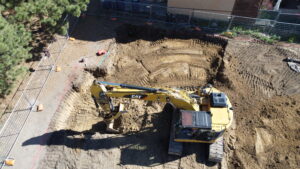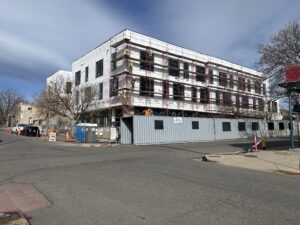Last month, I wrote a quick post about understanding the sources of long-term losses with post-tension tendons. One of the key points to take away from that is that the more post-tension material you use, the less effective each individual tendon becomes. However, this is something that seems to be frequently overlooked.
As engineers, we decide which direction we want to go for economy during the early phases of a project. We choose a thin one-way slab for material costs, or a waffle slab to cut forming costs, or a two-way banded system for placing speed, and we take our design from there. Frequently, once that decision is made, there are places where post-tension material can make a design work by pure brute force (108″x72″ transfer girder with 7,000,000 pounds of prestress? Can do!).
Unfortunately, more tendons are very rarely the best answer. First, as we add tendons, each tendon does less – leading, eventually, to lots of tendons doing very little. Second, not all bays are created equal – a short bay with excessive prestress can actually cause deflection problems in adjacent bays, and overly prestressed cantilevers can curl toward the rest of the structure during stressing. Third, every tendon changes the shape of the structure (elastic shortening) – this can pull columns out of plumb, and tear slabs away from shear walls.
As experienced post-tension designers, we have overseen numerous installations, and are familiar with both the design requirements needed to make a project successful, and the pitfalls that can catch the unwary. Post-tensioning can offer excellent value to a wide variety of projects – let us help you realize that value on your next project.










